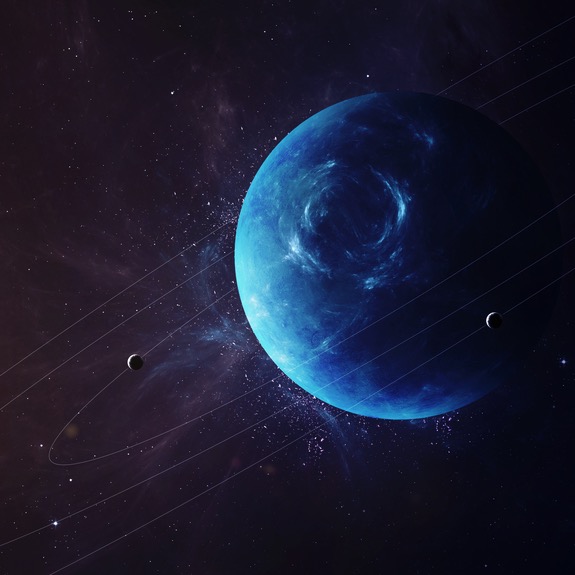Neptune is famously a vivid blue, but the asteroids orbiting near it are decidedly not. An international team of astronomers recently took a peek at Neptune’s Trojan asteroids and found that they all seem to be some shade of red — far redder than most asteroids in the solar system. They published their results Feb. 14 in the journal Monthly Notices of the Royal Astronomical Society: Letters.
The Neptunian Trojans are a cloud of asteroids whose orbit around the sun parallels Neptune’s. They hang out in the gravitationally stable points between Neptune and the sun, or between Neptune and the dwarf planet Pluto. First discovered in 2001, fewer than 50 of these rocky bodies have been described to date.
The reason for this is not that Neptunian Trojans are rare; it’s probably because it’s difficult to spot space rocks that are so small and far away. These asteroids tend to be 31 to 62 miles (50 to 100 kilometers) across and orbit at a distance of 2.8 billion miles (4.5 billion km) from the sun. Prior to this research, astronomers had studied only a baker’s dozen of these asteroids, and had to use some of Earth’s largest and most powerful telescopes to do it.
“Writer Fuel” is a series of cool real-world stories that might inspire your little writer heart. Check out our Writer Fuel page on the LimFic blog for more inspiration.


